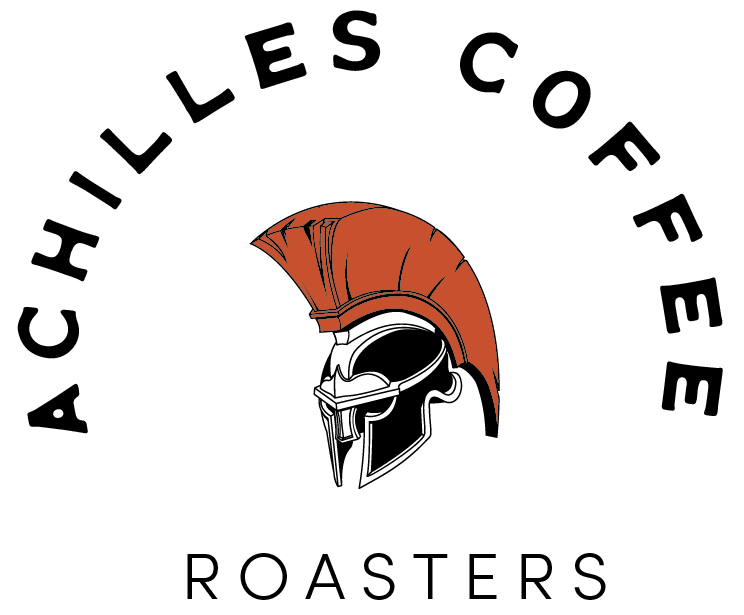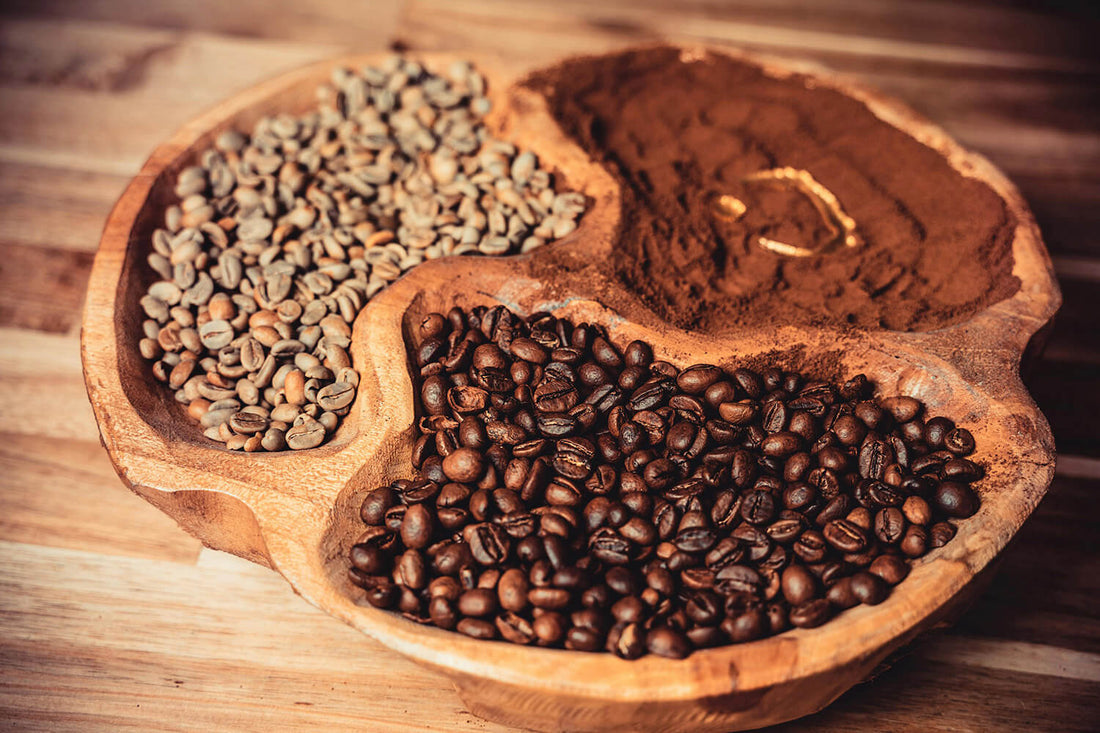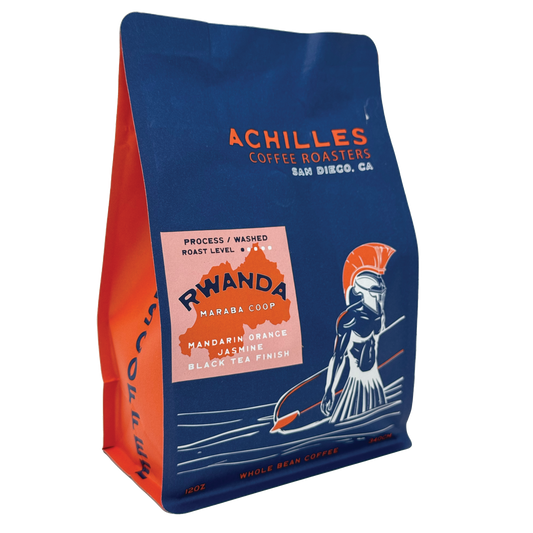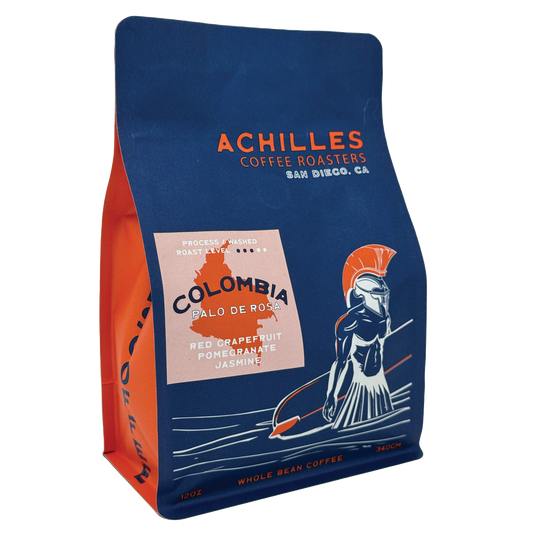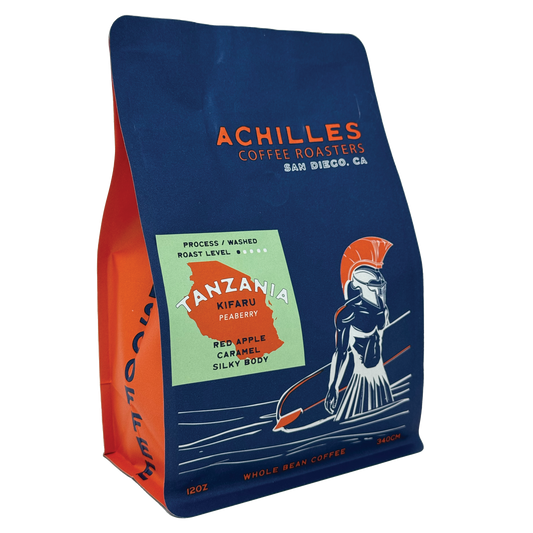Roasting coffee is one of the most remarkable transformations in the entire coffee journey — it’s where green, raw beans turn into the aromatic, flavorful product that defines how the world experiences coffee. But roasting isn’t simply about applying heat until beans turn brown. It’s an evolving blend of science, craftsmanship, and sensory artistry, refined over centuries by cultures, innovators, and modern technology.
In its earliest days, roasting was done with nothing more than a pan and an open flame. Coffee drinkers manually stirred small batches over coals, guided entirely by smell, sound, and instinct. From there, roasting moved into the industrial age with the invention of drum roasters and gas burners, allowing greater consistency and scale. And in today’s specialty coffee era, we’ve reached an unprecedented level of control, precision, and flavor engineering — where every variable, from airflow to bean temperature, can be measured and optimized in real time.
The evolution of coffee roasting mirrors the evolution of coffee itself: from commodity to craft, from mass production to mindful precision. What began as a rustic necessity has become a global pursuit of perfection — an intersection of heritage and high technology that continues to define how we taste and understand coffee today.
In this article, we’ll trace that journey — from ancient hearths to state-of-the-art roasters — exploring how innovations in design, technique, and sensory science have shaped modern coffee. You’ll learn how early roasting tools gave rise to the machines we use now, how each stage of innovation transformed flavor potential, and how today’s precision profiles allow roasters to unlock the distinct character of every origin.
This is more than the story of heat and color; it’s the story of how humans learned to turn raw coffee into an art form.
Ancient Origins: Open Flames and Hand-Roasting
The earliest known evidence of coffee roasting takes us back to the Middle East in the 15th century, when Sufi mystics in Yemen and Ethiopia first began transforming raw coffee beans into the fragrant, energizing beverage we know today. According to Tasting Table and Perfect Daily Grind, these early coffee pioneers roasted their beans using simple metal or porcelain pans held over open coals, stirring constantly to keep them from burning. The process was more art than science — guided by sight, smell, and sound rather than thermometers or timers.
The first recognizable roasting tools were thin, perforated pans or brazier-style vessels with long handles designed to hold over a fire. The perforations allowed heat to move through the beans while the roaster manually agitated them with a spoon or by shaking the pan. The goal wasn’t consistency — it was usability. Coffee roasted this way was often uneven, with some beans charred and others underdeveloped. Yet, for the first time in history, roasting transformed coffee from an inedible seed into a drinkable ritual, setting the foundation for centuries of innovation to come.
In the Ottoman Empire and Persia, coffee roasting became a daily ritual but remained largely utilitarian. As Tasting Table notes, the objective wasn’t to highlight terroir or flavor nuance — concepts that wouldn’t emerge until centuries later — but to make coffee palatable and energizing. Roasting served a social and spiritual purpose: the act of preparation brought people together in homes, coffeehouses, and places of worship. Sufi monks roasted and brewed coffee as part of evening devotions, believing the drink enhanced focus and clarity during prayer.
This early period reveals a truth often overlooked by modern coffee drinkers: roasting began as a functional process, not a flavor pursuit. The goal wasn’t to unlock tasting notes of jasmine or chocolate — it was to produce something warm, bitter, and sustaining. Coffee, at this stage, was a vessel for connection, energy, and ritual.
By the time coffee reached Europe in the 1600s, roasting methods had changed little. Historical texts such as Ukers’ All About Coffee describe early European households using long-handled pans, rotating iron trays, or cast-iron cradles held above hearth fires. Roasting was slow and smoky, filling kitchens with the rich aroma of caramelizing sugars and oils. Because each roast relied entirely on manual control, results varied widely from batch to batch — but this unpredictability also imbued the process with a sense of craft and ceremony.
While these early roasters lacked thermometers, airflow systems, or digital controls, they introduced something far more enduring: the culture of coffee roasting as a sensory art. Even without scientific precision, these early methods captured the essence of what roasting would always represent — a moment where heat and human intuition converge to turn a humble seed into something extraordinary.
These primitive, fire-lit beginnings laid the groundwork for the innovations that would follow. As coffee spread across continents and into commerce, the need for greater consistency, scalability, and flavor control gave rise to the industrial revolution of coffee roasting — where craftsmanship began to merge with engineering.
The Industrial Age: Mechanization & Scale
By the 19th century, coffee roasting had begun its dramatic transformation from an artisanal, home-based craft into a mechanized global industry. What was once a sensory ritual performed over open fires evolved into a process driven by engineering innovation, patents, and the demands of mass production. As coffee’s popularity surged across Europe and the Americas, the world needed faster, more consistent, and more scalable roasting methods — and inventors rose to meet the challenge.
During this time, dozens of patents were filed for mechanical roasting devices designed to improve efficiency, airflow, and batch size. Small cast-iron pans gave way to rotating drum roasters that could tumble beans continuously while exposed to steady heat. These machines were often powered by coal, wood, or early gas burners, enabling roasters to handle far larger volumes than ever before. According to Wikipedia and Kaladi Coffee Roasters, this period marked the dawn of commercial coffee roasting — a shift that laid the foundation for the global coffee trade as we know it.
One of the pivotal figures in this revolution was German engineer Carl Salomon, who introduced significant advancements in hot-air roasting and airflow control. As documented by Barista Hustle, Salomon’s designs allowed for more even heat distribution within the roasting chamber, reducing scorching and charring while improving consistency. His work pioneered the principle that air, not just direct flame, could be used to transfer heat to the beans — an idea that still underpins many modern fluid-bed and convection roasting systems.
By the late 1800s, the horizontal drum roaster had become the industry standard. Machines were now capable of roasting several dozen pounds of coffee in a single batch, with uniformity that would have been impossible a century earlier. The introduction of gas-fired burners offered more precise temperature control than wood or coal fires, while vacuum-sealed packaging—first developed in the early 20th century—preserved freshness and made large-scale distribution feasible. These innovations, chronicled by History of Coffee, revolutionized both the speed and scale at which coffee could be produced, shipped, and consumed.
However, progress came with trade-offs. The industrial age of roasting prioritized efficiency, volume, and shelf stability over sensory exploration. Roasts were pushed darker to mask inconsistencies, creating a uniform, bitter profile that would hold up through transport and storage. Large companies began blending beans from multiple origins to ensure a consistent flavor year-round, but this approach often diluted the distinctive characteristics of single-region coffees.
Coffee became more accessible than ever — a global staple that reached millions of homes, cafés, and workplaces. Yet, as quality gave way to convenience, much of coffee’s natural complexity was lost. The subtle acidity of Ethiopian beans, the floral sweetness of Central America, and the spice of Indonesian coffees were often roasted away in favor of uniformity.
This era represented both a triumph and a compromise: roasting technology had achieved unprecedented scale and reliability, but it had also distanced the drinker from the sensory diversity that makes coffee unique. Still, the groundwork was laid for what would come next — the craft and specialty revolution that would reintroduce artistry, flavor science, and origin character into the heart of roasting.
The Craft Revolution: Specialty & Precision Roasting
The late 20th century into the 21st century ushered in what coffee professionals now call the Third Wave of Coffee — a movement that redefined how the world thinks about coffee. In this era, beans are treated with the same reverence as fine wine grapes. Coffee origins are celebrated, farm-to-cup transparency is prioritized, and roasting becomes a deliberate act of craftsmanship designed to reveal flavor, not conceal it.
Roasters began using data, temperature curves, and controlled heat transfer to unlock each bean’s potential. Where once “dark roast” was synonymous with “strong,” the new philosophy became “light-to-medium roast equals expressive.” Coffee was no longer a one-note experience; it became a spectrum of terroir, texture, and transformation.
This era gave rise to the roast profile — a structured timeline of how heat is applied to the beans throughout the roast. With the development of small-batch roasting machines and digital monitoring tools, professionals could now visualize and repeat every variable: temperature, time, airflow, and rate of rise. Software like Cropster and Artisan allowed roasters to log real-time data, overlay curves from previous batches, and tweak roast dynamics with remarkable precision.
The core question of this new movement was simple but profound:
How do we highlight a coffee’s true origin character rather than roast it away?
Roasters began experimenting with lighter and more nuanced profiles, carefully controlling heat to preserve the floral brightness of Ethiopian coffees, the citrus acidity of Kenyan beans, or the chocolatey sweetness of Central and South American origins. The objective was no longer uniformity or efficiency — it was expression and balance.
Modern roasting machines reflect this evolution perfectly. Today’s roasters can record time-versus-temperature curves, measure bean mass loss, monitor exhaust airflow, and even log environmental temperature differentials in real time. Many models are equipped with infrared sensors, PID controllers, and digital interfaces that let operators fine-tune every stage of the roast. The result? Repeatability and control once unimaginable to early roasters.
Processing methods, too, began influencing roasting approaches. Wikipedia notes that natural, honey, and washed coffees each require unique heat strategies. Natural-process beans, rich in sugars and fruit compounds, benefit from slower heat development to enhance sweetness. Washed coffees, which are cleaner and more delicate, demand precision to highlight acidity without tipping into sourness. Honey-processed beans sit in between — syrupy and complex, calling for gentle, layered heat application.
In many ways, the modern roaster is both scientist and artist. They use data as a guide but rely on sensory intuition — the crackle of first crack, the color shift of caramelization, the aroma of browning sugars — to make final decisions.
Even the equipment itself evolved from Salomon’s foundational ideas. The fluid-bed roaster, inspired by his 1892 work with hot-air roasting, gained renewed importance in the specialty era. These machines use convection rather than conduction, suspending beans in a stream of hot air for a faster, cleaner roast. The result is higher control, reduced scorching, and clarity of flavor — ideal for light and medium roasts prized by the specialty community.
Today, micro-profiling is standard practice. Roasters test dozens of profiles for a single coffee, adjusting by seconds or degrees to bring out subtle differences. They meticulously record data, taste, adjust, and repeat — a continuous cycle of calibration that bridges art and algorithm.
This is the defining spirit of modern roasting: precision, transparency, and purpose. Every variable — from airflow and drum speed to cooling time — becomes a creative tool. What began centuries ago as fire and instinct has evolved into a global dialogue between science and the senses.
The Third Wave didn’t just change how coffee is roasted — it changed how coffee is understood. Today, roasting is no longer the end of the process; it’s the craft that completes the story.
Key Milestones in Roasting Technology
The journey of coffee roasting spans more than six centuries — a remarkable evolution from open fires and hand-stirred pans to digital interfaces and AI-driven precision. Each era brought new techniques that not only changed how coffee was roasted, but also how it tasted, traveled, and was shared across the world.
15th–16th Centuries: The Birth of Roasting Tradition
The earliest methods of roasting coffee date back to the 15th and 16th centuries, originating in Yemen, Ethiopia, and across the Middle East, where coffee first became a cultural cornerstone. As Wikipedia notes, early roasters used simple metal pans or trays held over open flames, manually stirring the beans with spoons or rods to avoid scorching.
These early techniques were performed over charcoal or open coals, often in family kitchens or Sufi monasteries where coffee played a role in religious ritual. Roasting was intimate, slow, and sensory — guided by sight, sound, and the rich aroma of caramelizing sugars. While the results were inconsistent and small in scale, this era established roasting as both a craft and a communal act, setting the foundation for coffee’s global rise.
1704–1710: The First Patented Coffee Roasters
By the early 18th century, coffee’s popularity had exploded across Europe. The demand for roasted beans led inventors to seek more efficient methods. Between 1704 and 1710, the first commercially patented coffee roasters appeared in England and continental Europe, as documented in Ukers’ All About Coffee.
These early machines introduced mechanical rotation and coal-fired heating, allowing beans to tumble as they roasted — a huge leap forward from static pan-roasting. The result was greater consistency and control, even though temperature measurement was still primitive. These devices marked the beginning of coffee roasting as a technology-driven industry, paving the way for future innovations in heat transfer and batch uniformity.
Late 1800s: The Drum Roaster and the Age of Industrial Innovation
The Industrial Revolution brought rapid innovation to nearly every industry — coffee included. By the late 1800s, engineers introduced hot-gas ventilation systems and tumbling drum mechanisms that revolutionized how coffee was roasted.
According to Kaladi Coffee Roasters, this was the era when horizontal drum roasters became the dominant form of commercial equipment. Gas and steam power replaced coal, while rotating drums ensured beans heated evenly from all sides. These machines could handle far larger batches and roast in a fraction of the time compared to earlier methods.
The improvements in airflow control and heat consistency marked a turning point. Roasters could now produce coffee at industrial scale without completely sacrificing quality. Coffee’s transformation from a regional specialty to a global commodity began here, as roasting became faster, cleaner, and scalable.
Early 1900s: The Rise of Vacuum-Sealed Freshness
By the early 20th century, roasted coffee was no longer a local product — it was a global trade good. However, with global distribution came a new problem: freshness. Once roasted, coffee quickly loses its aroma and flavor due to oxidation.
To solve this, major roasters introduced vacuum-sealed packaging, a breakthrough chronicled by History of Coffee. This innovation allowed roasted beans to be shipped long distances while retaining much of their original flavor. Paired with the rise of industrial drum roasters and the first large-scale roasting companies, this era turned coffee into a reliable, shelf-stable product for the first time.
While this new efficiency brought convenience and consistency to millions of consumers, it also marked the start of darker, more standardized roasting. The global market valued uniform taste over nuance — setting the stage for a later backlash from those who would seek to revive craftsmanship and flavor diversity.
Late 20th–Early 21st Century: The Specialty Coffee Renaissance
Fast forward to the late 20th century, and coffee experienced a renaissance. The rise of the specialty coffee movement—what’s now known as the third wave—brought roasting back into the realm of artistry. According to Lincoln & York, this era saw the emergence of small-batch roasters, single-origin coffees, and digital roast profiling that let roasters fine-tune every variable of the process.
Modern machines integrated temperature sensors, data logging, and computer-controlled heat curves, allowing operators to replicate roasts with scientific precision. Instead of roasting for efficiency, the new generation roasted for expression—aiming to highlight terroir, sweetness, acidity, and aroma unique to each origin.
In many ways, this period represents the full circle of coffee roasting: a return to craftsmanship, but now enhanced by technology. Where early roasters relied solely on instinct, today’s roasters combine sensory skill with digital precision, merging art and analytics to bring out the best in every bean.
From open flame to algorithm, the evolution of roasting reflects more than just technological progress — it captures humanity’s growing curiosity, creativity, and respect for the humble coffee bean. Each milestone didn’t just improve consistency; it deepened our understanding of flavor and fueled the ongoing pursuit of the perfect cup.
How Roasting Evolution Impacts Flavor Today
Every step of roasting evolution doesn’t just change efficiency—it changes how coffee tastes. Here are some key flavor implications:
-
Heat control & roast duration: Early pan-roasting produced uneven results; modern machines enable consistent color, consistent “cracks,” and consistent flavor transformation. Wikipedia
-
Profile management: Roasters now use profile curves to deliberately influence acidity, body, sweetness, and finish. That means the same bean from the same farm can taste very different depending on roast choices.
-
Origin preservation vs roast dominance: Modern craft favors lighter roasts that preserve origin character; older dark roasting pushed roast flavor over origin flavor. This is a direct result of the shift from mass production to specialty.
-
Batch size & cooling: Larger commercial batches risk slower cooldown and over-roasting; craft roasters focus on smaller lots and rapid cooling to lock in desired flavor.
-
Equipment innovation: Drum vs hot-air (fluid-bed) roasters influence bean behavior and flavor outcome; airflow, bean movement, and roast environment matter. Wikipedia
What This Means for Roasters and Coffee Shop Owners
For roasters like yourselves, understanding this evolution offers strategic advantage:
-
You can tell a story of craft: from “heritage open flame roasting” to “precision profile engineering,” the history adds depth to your brand.
-
You can educate customers: explain why you profile, why you roast light or dark, show them the evolution and how it benefits flavor.
-
You gain reason to invest in equipment and training: modern roasting requires calibration, data logging, and ongoing experimentation.
-
You align with the specialty movement: acknowledging origin, processing, and roast profile positions you with consumers who demand transparency and quality.
Tips for Enthusiasts: How to Taste the Roasting Evolution
If you’re a photographer, designer, coffee–enthusiast (or all three, like many of you reading) wanting to deepen your connection to coffee, here are actionable steps:
-
Compare roast levels intentionally: Buy the same origin bean roasted light, medium, and dark. Brew them identically and log the difference in aroma, acidity, body, finish.
-
Visit a roastery or shop that profiles batches: Ask them about their curve charts, cooling methods, batch sizes—see roasting as craft.
-
Home experiment lightly: If you roast at home (or have a small roaster), try controlling variables: temperature ramp, first/second crack timing, cooling. Taste the difference.
-
Keep a flavor log: Note roast date, lot size, equipment, roast profile if available. Over time you’ll build a reference of what profile tastes like to you.
-
Share and deliberate: Brew the same batch via pour-over, French press, espresso. Roasting influences how method interacts with bean. Taste how roast profile evolves across methods.
The Future of Roasting: Precision, Data, Sustainability
Looking ahead, coffee roasting continues to evolve. We’re seeing:
-
Greater use of data and automation: Roasters now use sensors, thermocouples, airflow meters, and machine log data to optimize and replicate profiles with precision.
-
Sustainability focus: Energy-efficient roasters, carbon reduction, smaller lots, traceability from farm to cup all shape the future of roasting.
-
Hyper-specialty micro-lots: With origin transparency and micro-batches, roasters are treating bean lots almost like rare wines, profiling more carefully than ever.
-
Consumer experience: Roasteries and cafes are offering guided tastings, roast-curve visuals, and interactive education—not just coffee service, but storytelling and craft.
Final Thoughts
The evolution of coffee roasting is a powerful narrative: from the simple pan over an open fire to high-precision machines that measure every second and every degree of bean temperature. It’s a story about how we’ve moved from coffee as commodity to coffee as craft, how technology and art merged, and how flavor and origin now take center stage.
For anyone involved in roasting, hospitality, or coffee education, knowing this history isn’t just a trivia fact—it’s a tool. It helps you understand why you roast the way you do, why certain flavors appear, and how to communicate value to your customers or audience.
And for the coffee drinker, it changes how you sip your cup. You begin to ask: What profile was used? How did the roaster shape this flavor? Every sip becomes richer when you know the journey behind it.
So the next time you watch beans tumbling in the roaster, or you smell that first crack, remember: you’re witnessing a centuries-old craft that continues to evolve. And in your cup, you’re tasting the result of generations of roasting innovation—crafted to bring out the best in every bean.
